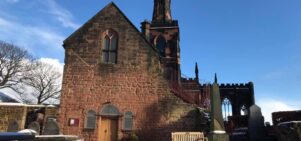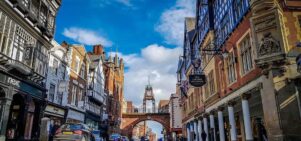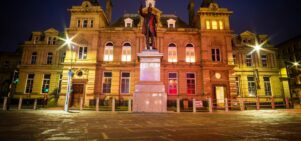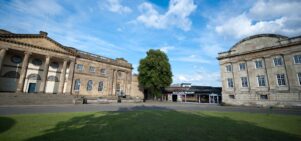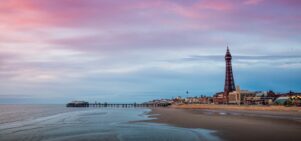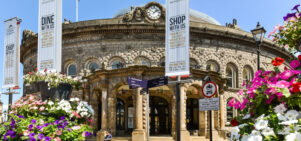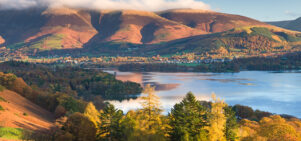Hebden Bridge and Haworth: A literature lover’s day trip
Creative TouristHead for the wily, windy moors for an inspiring day out – just don’t forget your walking boots…
In his poem The Stubbing Wharfe, Ted Hughes recalls a maudlin trip back to his Yorkshire roots with wife Sylvia Plath, describing the place as “A gorge of ruined mills and abandoned chapels / The fouled nest of the Industrial Revolution.” While this might well have been a fair assessment of Hebden Bridge at the time, we doubt that either poet would recognise it now. Situated just down the way from Hughes’ birthplace of Mytholmroyd (you’ll find his childhood home turned holiday cottage at number one Aspinall Street), Hebden Bridge has undergone a dramatic transformation over the years, becoming a much-publicised hub for artists, writers and the creatively inclined, who’ve collectively formed a thriving artistic community. Unsurprisingly, it’s also home to one of Yorkshire’s longest running arts festivals, the Hebden Bridge Arts Festival.
On weekends, mud-splattered cyclists and dog walkers congregate around the main square, and visitors weave in and out of design-led craft shops, vintage emporiums and cafés. While there are plenty of distractions, any literature lovers planning a day out there will want to allot a good hour or so to explore every nook of The Book Case bookshop. If you’re planning a long walk while you’re there, then there’s enough going on that it might be worth staying the weekend: Triangle Cottage, on a hillside a short walk from the town centre, is a good option, with beautiful stone work and traditional beams.
Once you’ve exhausted the town centre, a short walk along the canal leads to the Stubbing Wharf pub, where Hughes’ aforementioned poem was set. It’s ideal for a pint and some quality pub grub. On the wall of the bar you’ll find a short history of the place – though this doesn’t explain where exactly Hughes acquired the surplus ‘e’ in the title of his work.
Up on the hillside above the town is Heptonstall. Sweet Briar cottage at the heart of the village is a lovely option if you’re thinking of staying the night: this Grade II listed, stone-built hideaway is an ideal jumping off point for more ambitious walks over the moors. Heptonstall is also remarkable as the final resting place of Sylvia Plath. Despite the fact that they were separated at the time of her death, that she was Boston-born and ended her life hundreds of miles away in London, it was Hughes who chose to bury the troubled poet here, close to his childhood homestead – despite his evisceration of the place. Plath herself even painted her own unflattering portrait of Heptonstall’s St Thomas’ Church in her poem November Graveyard.
Heptonstall is also remarkable as the final resting place of Sylvia Plath
You’ll find Plath’s grave in the newer section of churchyard, carved out in an adjacent field; famously, she’s buried as Sylvia Plath Hughes. The “Hughes” portion of the name plate is frequently vandalised (or even completely removed) by fans – resentful that, even in death, Plath seems to remain in her husband’s shadow.
Haworth, steeped in all its Brontë associations, is just a few miles down the road; in fact, Plath herself made the pilgrimage there on her Yorkshire visit with Hughes in 1956. The most obvious draw is the Brontë Parsonage Museum, the quaint building extended and carefully preserved in tribute to its talented former residents. Once you’ve taken in the room where Jane Eyre was written, and explored the world’s most extensive collection of Brontë exhibits, make your way past the school where Charlotte once taught and along to Haworth Church: there, you’ll find a stone marking the family vault.
Just behind the church at the top of the steep main street is the Black Bull pub, where capricious Brontë brother Branwell spent many hours squandering his money and artistic talents on gambling, gin and opium. The cobbled hill is dotted with shops and tea rooms – the perfumed scents that emanate from Rose & Co. Apothecary are particularly hard to resist.
If you want to sink even deeper into the romanticism of it all, stride out onto the moors to follow in the Bronte’s adventurous footsteps. Signposts out of the village lead to the picturesque Brontë waterfall, and then a slightly more challenging walk up to Top Withens, the supposed inspiration for the Wuthering Heights. There’s usually a trail of walkers on the path, but we suggest you familiarise yourself with the route and take a map, too – the moors can be disorientating.
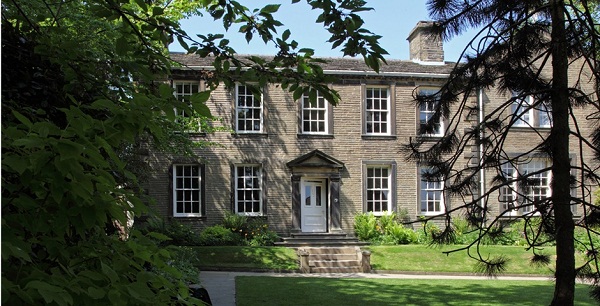
Although measures have recently been taken to preserve what remains, the farmhouse that stands here is largely in ruins – and when you feel the wild force of the winds on the exposed hillside, you’ll understand why. Look out across the seemingly endless expanses of open land, however, you’ll feel at least some of the same sense of isolation and wonder that so captured Emily Brontë’s imagination.
On the way back towards the village, stop at the gently-themed The Wuthering Heights pub in Stanbury – a fittingly serene end to a long day. This is the kind of trip that allows you to appreciate how wonderful it is that some places can change so completely, and that others can remain totally untouched.

